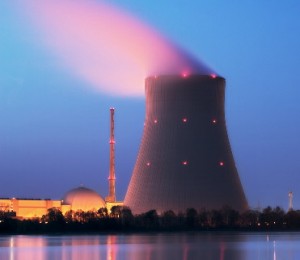India's Nuclear Policy: Not New, Not Clear

‘Smiling Buddha’–India’s first nuclear weapon explosion–marked a watershed moment in Indian history, serving as a promising start for further investment in a highly advanced technological field. Since its first nuclear test in 1974, India has both maintained and advanced its nuclear capabilities. It has recently built several new plants and developed more infrastructure; in fact, India is trying to increase its nuclear energy capability to 63 gigawatts by 2032—more than 13 times its current capacity.
However, with great power comes great responsibility–and India has been far less than responsible when it comes to its nuclear safety policy.
The nuclear power plant accident near Tamil Nadu earlier this month spurred protest and controversy concerning India’s nuclear infrastructure. Although the reported cause of injury for the six employees was attributed to hot water spillage rather than to a more drastic result of nuclear development, such as radiation leakage, this event has made the general public wary in regards to the effectiveness of current safety measures. India has fewer security-related policies in its nuclear department than either France or the US. More rigid nuclear legislation should be passed by the Atomic Energy Regulatory Board (AERB), a government organization that handles India’s nuclear policies; policies that are currently subpar.
Interestingly, just a few days prior to the accident at the Kudankulam Nuclear Power Plant, the Supreme Court rejected an anti-nuclear activist motion to increase regulation at the site by appointing a safety-monitoring commission. A statement made on behalf of the Supreme Court indicates that they found it “unnecessary to appoint any committee at this stage.”
The AERB is hastily developing nuclear energy, often overlooking safety precautions—without changing the current manner in which development occurs, more accidents are likely to happen in the future.
Lack of organization regarding India’s nuclear strategy has caused problems outside of the plant as well; for example, it has had pervasive social repercussions. Although employment opportunities and implementation of high-tech infrastructure are a few of the benefits offered by nuclear development, the potential dangers, which include nuclear accidents and radiation poisoning, are feared throughout the Indian population. Thanks to the media and various civil groups, often worst-case scenarios regarding nuclear accidents are presented as imminent and inevitable. Thus, without proper safety regulations, it is difficult for the Indian population to appreciate the benefits of nuclear development.
Repairing India’s nuclear infrastructure and tightening its safety policies are examples of measures that could effectively combat the negative societal perspective of nuclear development. By enforcing more regimental legislative policies, more people would be in favor of nuclear development and fewer accidents would occur. If India does intend on further developing its nuclear program, the status quo policies need to be changed–‘Smiling Buddha’ won’t be smiling again until then.




